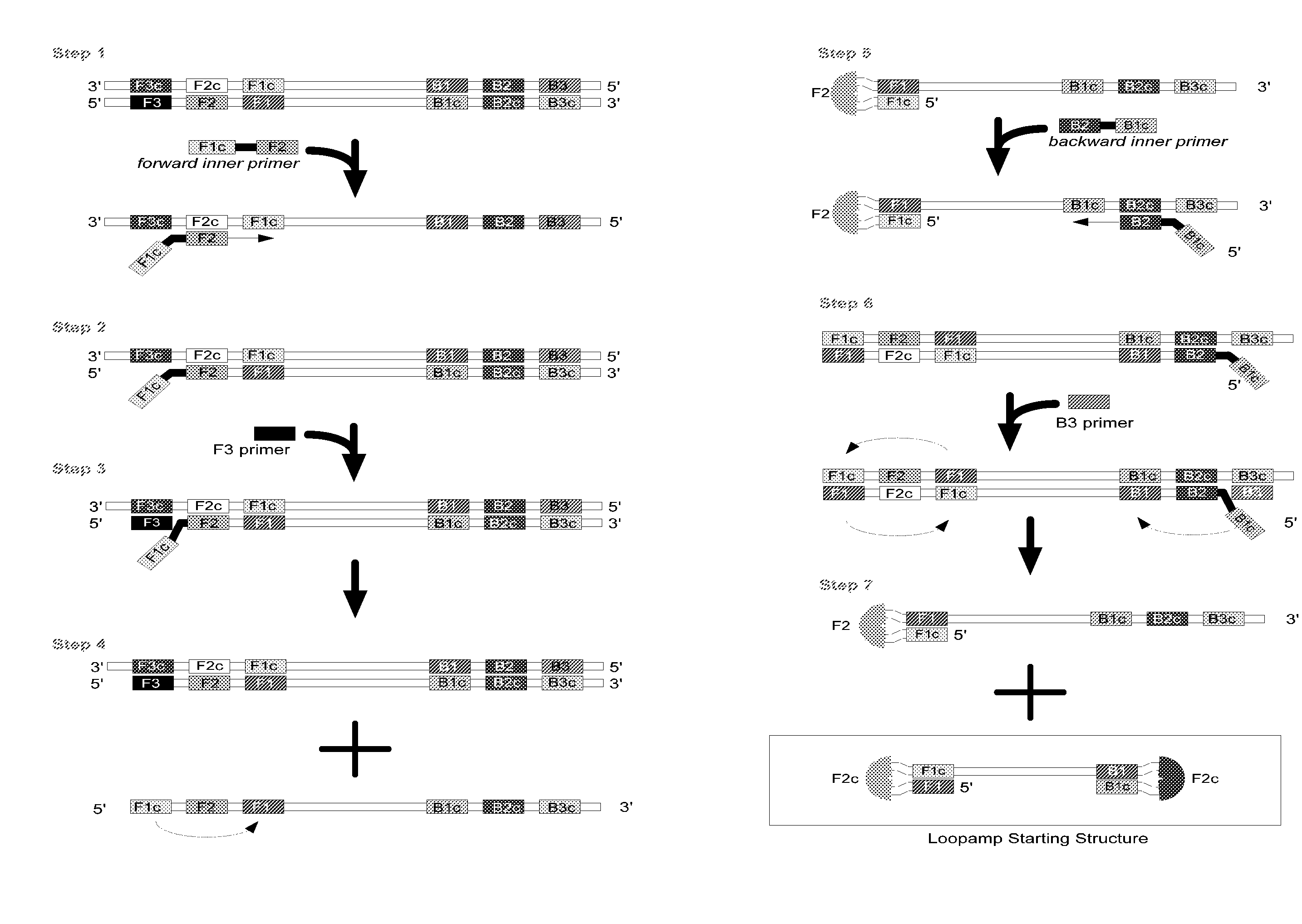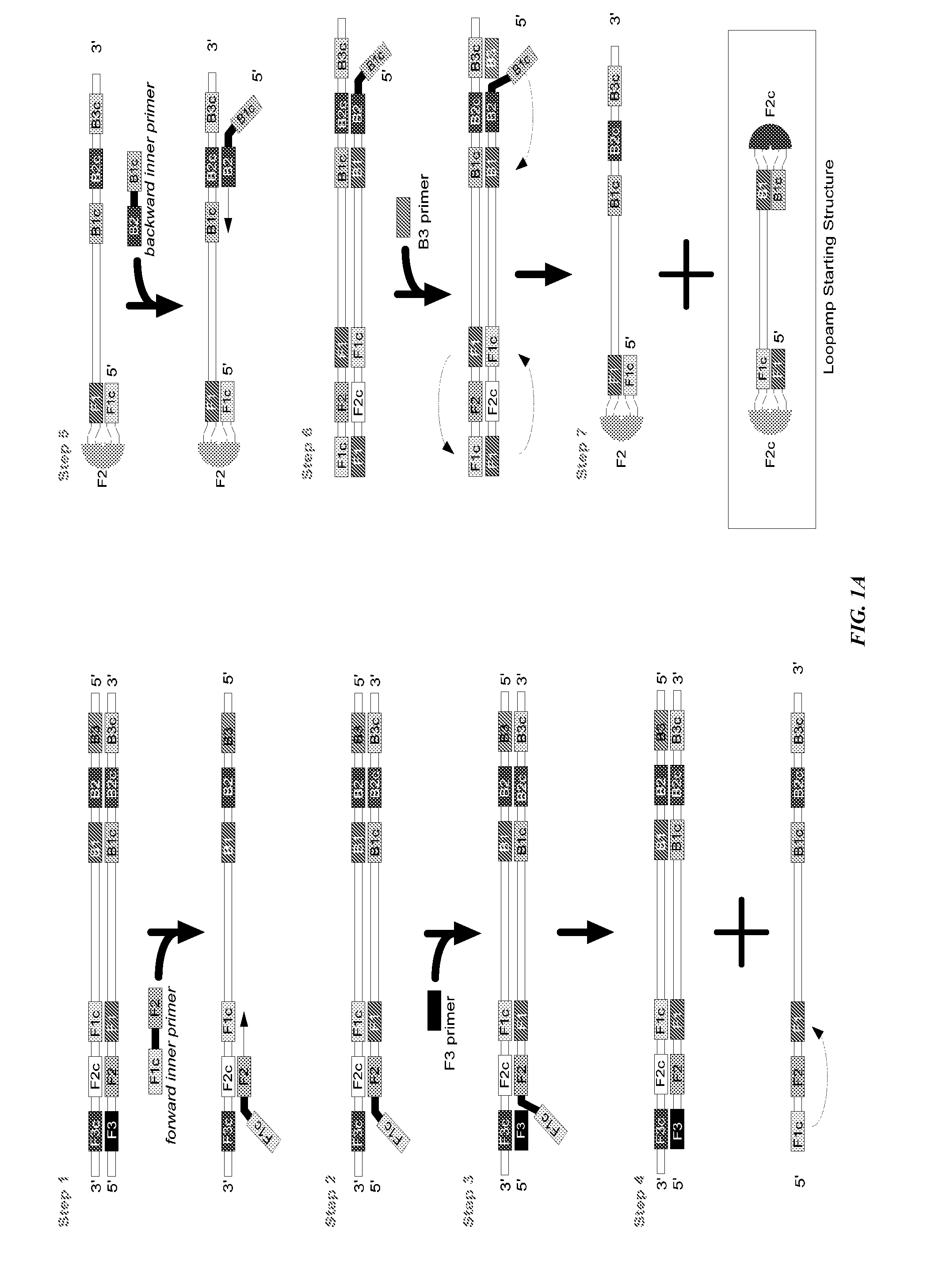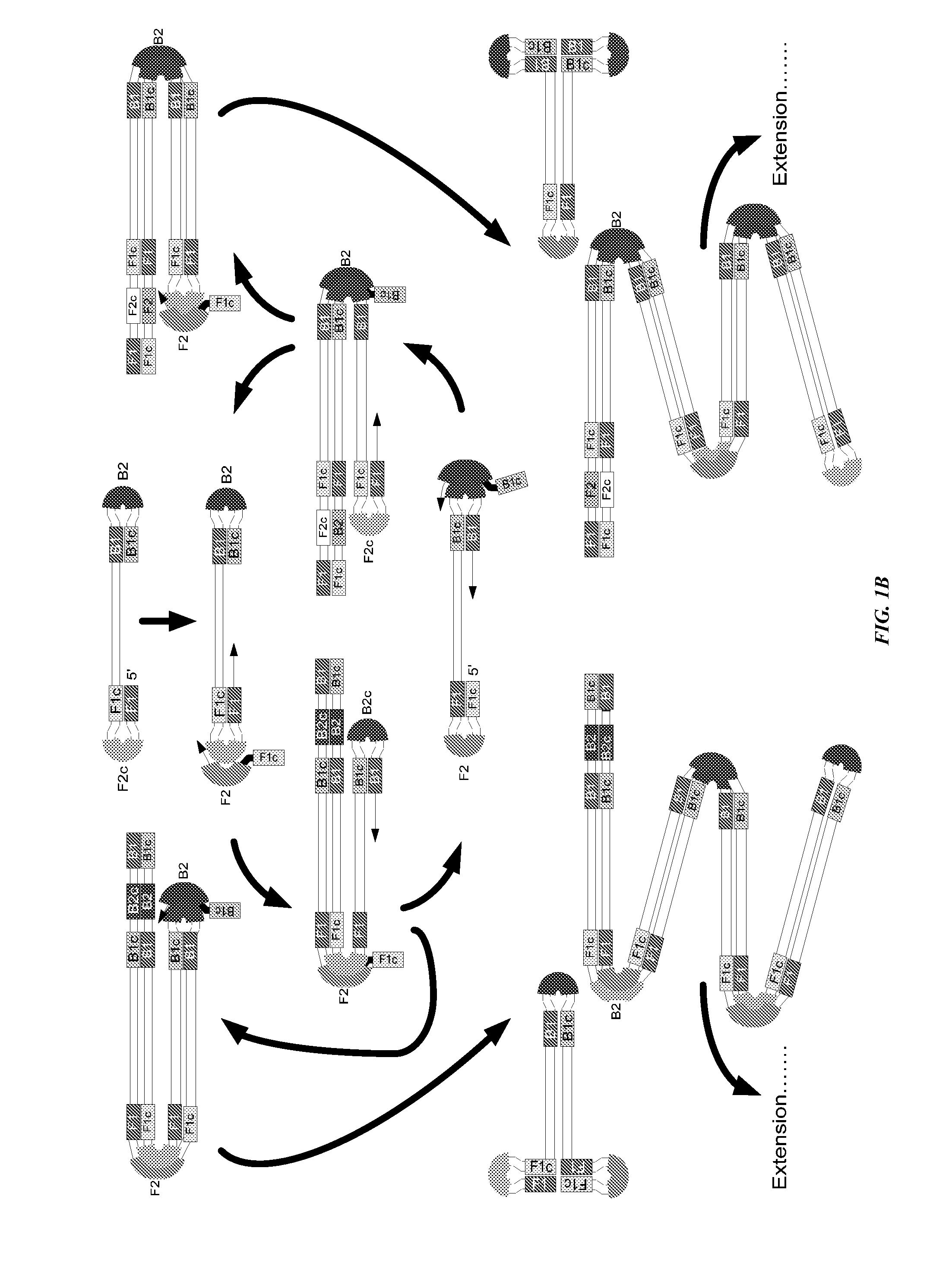Stable reagents and kits useful in loop-mediated isothermal amplification (LAMP)
a technology of isothermal amplification and stable reagents, which is applied in the field of long-term storage of biological materials and reagents useful in nucleic acid amplification, can solve the problems of reducing the acceptance of lamps in clinical laboratory settings, limited technology, and user error, so as to improve the ease of use, eliminate user error, and provide reagent stability
- Summary
- Abstract
- Description
- Claims
- Application Information
AI Technical Summary
Benefits of technology
Problems solved by technology
Method used
Image
Examples
example 1
[0032]The functionality of the dry format containing the reagents necessary for LAMP were compared. The differences in the format are shown in Table 1.
TABLE 1Standard LAMP kitDry Format Lamp Kit2 x Reaction Mix (1 tube)1.5 ml Reaction Tube (1 tube)2M betaine32U Bst enzyme40 mM Tris-Cl pH 8.8[and 3U AMV reverse20 mM KCltranscriptase (if RNA target)]20 mM (NH4)2SO4Primers (kit dependent)16 mM MgSO4dNTPsdinucleotide triphosphates (dNTPs)0.2% Tween 20Primer Mix (1 tube)Aqueous Buffer (1 tube)Primers (target specific)25 mM Tris-HCl pH 8.812.5 mM KCl10 mM MgSO412.5 mM (NH4)2SO40.125% Tween 201.25 M betaineEnzyme Mix (1 tube)8 U / μl Bst polymerase[and 1 U / μl AMV reversetranscriptase (if RNA target)]50% GlycerolDistilled WaterNegative Control of(1 tube)DNAse / RNAse free water(1 tube)Positive ControlPositive Control(1 tube)(1 tube)
[0033]Wet Format LAMP. In the standard LAMP kit, the kit components must be stored at −20° C. The recommended protocol is as follows: Remove reagents from −20° C. an...
example 2
[0037]The purpose of this experiment was to determine if reverse transcriptase LAMP (RT-LAMP) would function if Bst polymerase and AMV reverse transcriptase were lyophilized in the same tube.
[0038]Materials included dNTPS (25 mM) (New England Biolabs); Eiken Norovirus GI primer mix set; dialyzed Bst DNA polymerase (˜37 u / μl, no glycerol); AMV reverse transcriptase (20 u / μl) (Stratagene); AMV dialysis buffer (200 mM KH2PO4, 2 mM dithiothreitol (DTT) and 0.2% Triton X-100), pH 7.2; reconstitution buffer (2×): 40 mM Tris-HCl pH 8.8, mM KCl, 16 mM MgSO4, 20 mM (NH4)2SO4, and 0.2% Tween 20; and betaine.
[0039]Procedure—Lyophilization of Enzyme Mix
1. Prepared enzyme dilutionsa.Bst 8 u / μl:2.4 μl dialyzed enzyme +7.6 μl dH2Ob.AMV 0.5 u / μl:0.7 μl dialyzed enzyme +9.3 μl dH2O2. Prepare enzyme mix in three 0.2 ml tubesa.Norovirus GI primer mix:2.5 μl per tubeb.Diluted Bst1.0 μl per tubec.Diluted AMV1.0 μl per tubed.25 mM dNTPs1.4 μl per tube3. Enzyme mix lyophilized 30 minutes.4. Added reconsti...
example 3
[0044]Purpose: The purpose of this experiment was to confirm the requirement to remove glycerol from the enzyme storage buffer prior to lyophilization.
[0045]Materials included dNTPS (25 mM) (New England Biolabs); Clostridium difficile TcdB (Toxin B) Loopamp primer set; Bst DNA polymerase (120 u / μl) (New England Biolabs); Bst DNA polymerase (8 u / μl) (New England Biolabs); and Bst DNA dialysis buffer (50 mM KCl, 10 mM Tris-HCl pH 7.5, 0.1 mM EDTA, 1 mM dithiothreitol (DTT) and 0.1% Triton X-100), pH 7.5.
[0046]Procedure—Lyophilization of Enzyme Mix: 10 reactions tubes each were prepared for the undialyzed and dialyzed enzyme by preparing a 10.5 reaction volume for each enzyme condition in one tube and aliquoting single reaction volume into 10 tubes as follows:
10.5 volumeper reaction tubeUndialyzed:dNTP58.8 μl 5.6 μlPrimer mix42 μl4.0 μlBst (8 u / μl)84 μl8.0 μlDialyzed:dNTP58.8 μl 5.6 μlPrimer mix42 μl4.0 μlBst (37 u / μl)21 μl2.0 μl
[0047]Lyophilization monitored through glass at 8 minut...
PUM
| Property | Measurement | Unit |
|---|---|---|
| pH | aaaaa | aaaaa |
| pH | aaaaa | aaaaa |
| temperatures | aaaaa | aaaaa |
Abstract
Description
Claims
Application Information
 Login to View More
Login to View More - R&D
- Intellectual Property
- Life Sciences
- Materials
- Tech Scout
- Unparalleled Data Quality
- Higher Quality Content
- 60% Fewer Hallucinations
Browse by: Latest US Patents, China's latest patents, Technical Efficacy Thesaurus, Application Domain, Technology Topic, Popular Technical Reports.
© 2025 PatSnap. All rights reserved.Legal|Privacy policy|Modern Slavery Act Transparency Statement|Sitemap|About US| Contact US: help@patsnap.com



